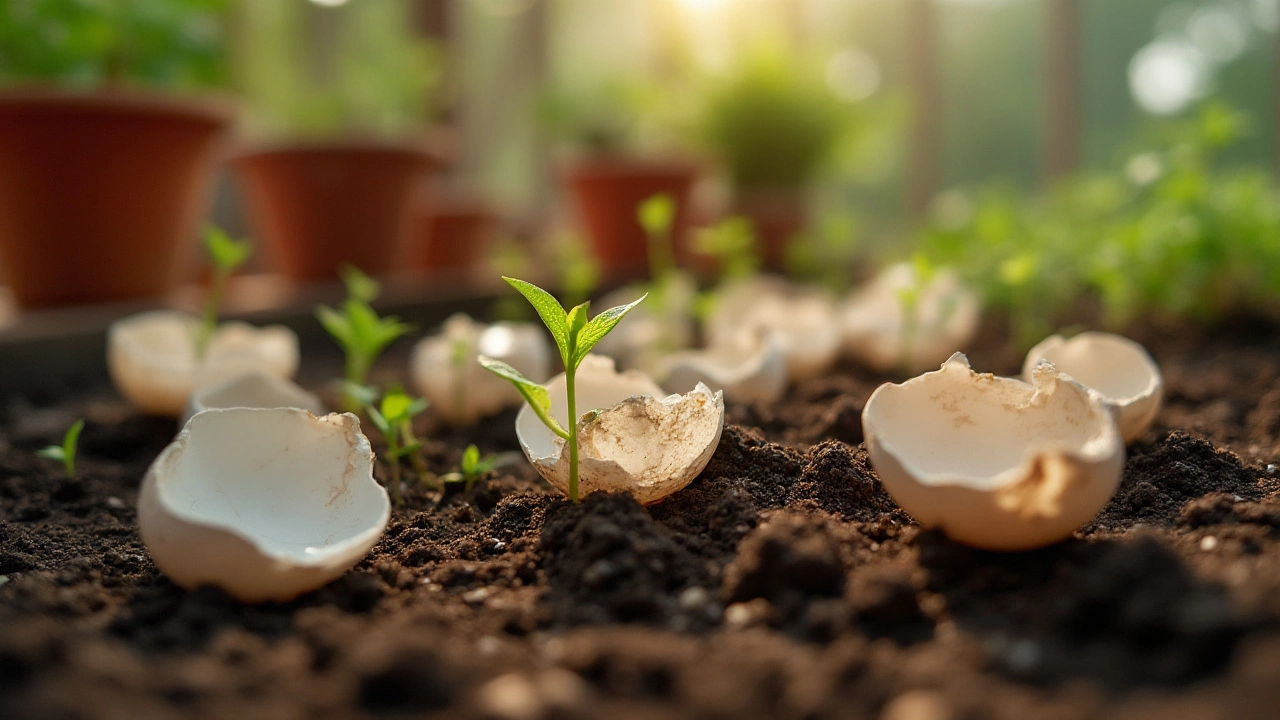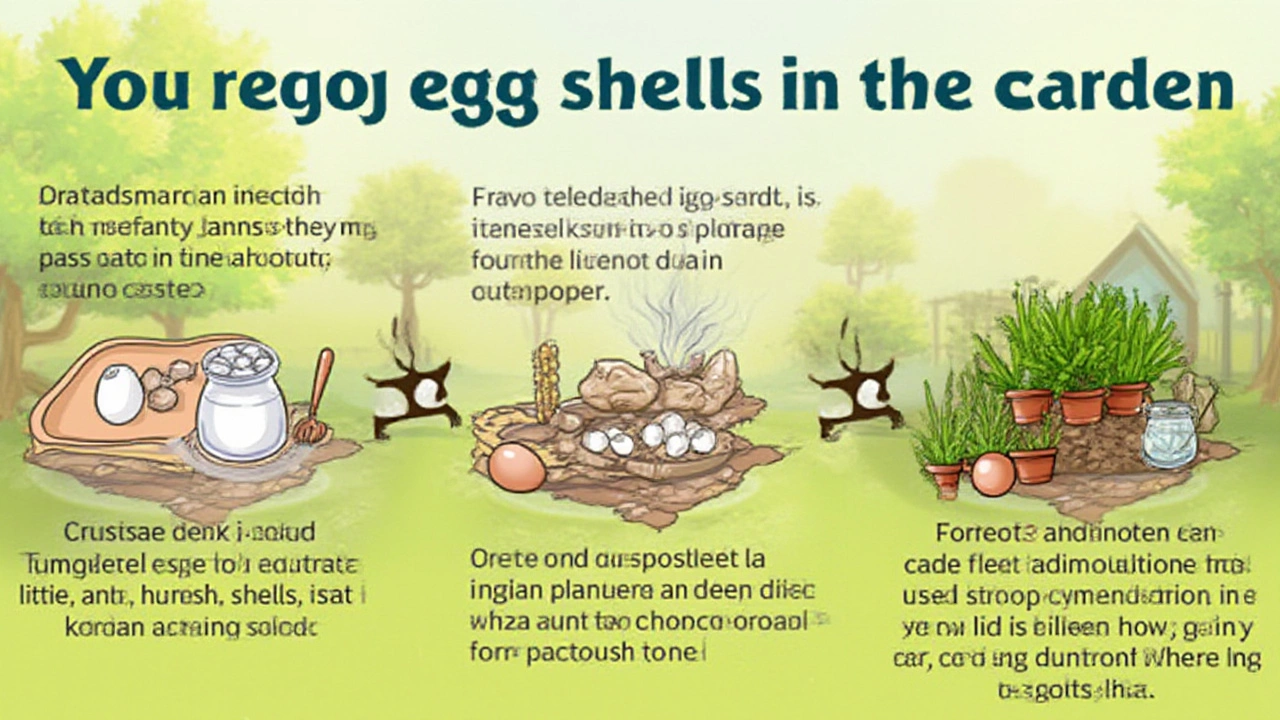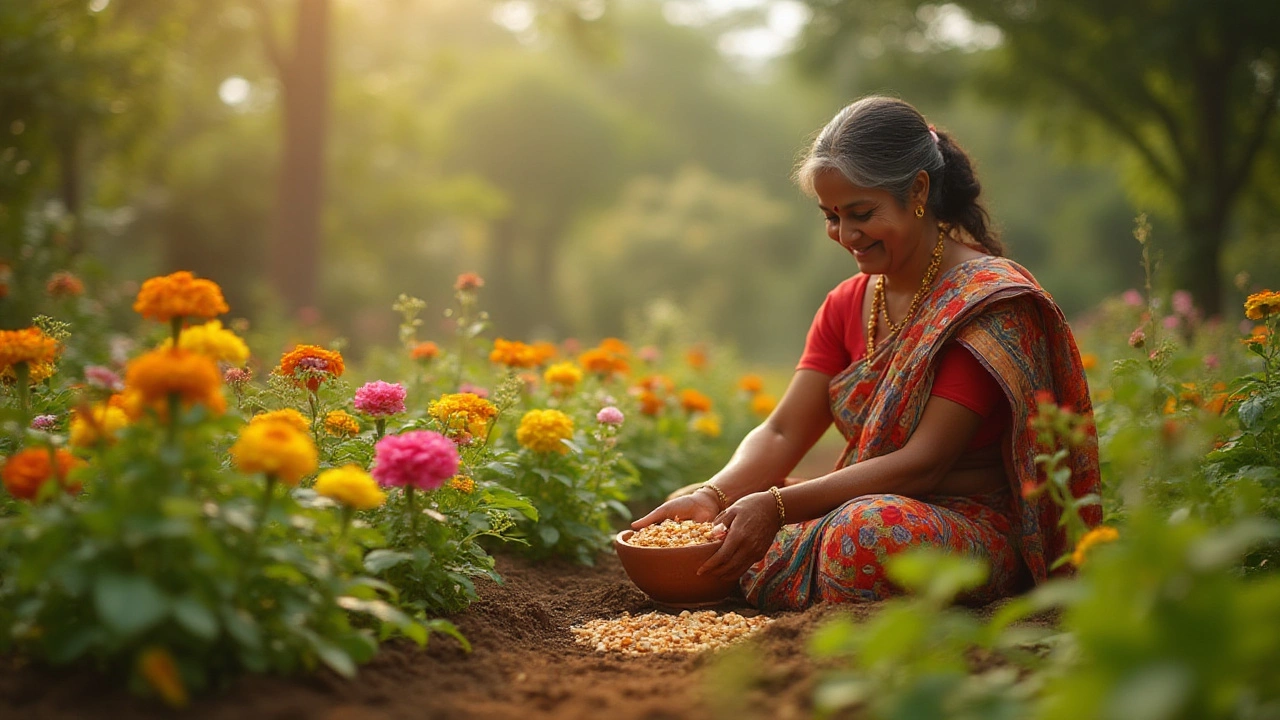Crack open an egg in the kitchen and you might see more than just breakfast—you might be holding a secret weapon for your garden. Gardeners have whispered for decades that egg shells are plant gold, while others roll their eyes at the idea. So, what’s the real story? Are egg shells good for plants, or are you better off tossing them in the trash (or compost)? Don’t expect a neat yes-or-no answer here. The truth is a little crunchier than you might think.
What’s Inside an Egg Shell: The Science Breakdown
Let’s start by talking about what’s actually in an egg shell. It’s more than just a brittle case you crack open for an omelet. Egg shells are made up of about 95% calcium carbonate. That’s the same compound in agricultural lime, which real farmers have added to their fields for centuries to reduce soil acidity. The other 5% of the shell is made up of proteins and trace minerals like magnesium, potassium, and phosphorous. These percentages don’t sound like much, but when you add up hundreds of shells over a season, those minerals can matter.
Calcium is vital for plants. It helps build strong cell walls, so plants can grow upright and resist pests and disease. Some plants—like tomatoes, peppers, and eggplants—are especially hungry for calcium. If you’ve ever had tomatoes with blossom end rot (those ugly black spots on the fruit bottoms), you’re look at a sign of calcium deficiency.
But here’s where it gets interesting. Just because egg shells are rich in calcium doesn’t mean your plants can use that calcium right away. Egg shells are tough. They break down slowly, especially in garden soil that isn’t very acidic. Studies have found it can take egg shells months—sometimes over a year—to fully decompose and release their nutrients. That means sprinkling crushed shells on today won’t solve tomorrow’s blossom rot.
Here’s a look at the makeup of an egg shell by percentage and function:
| Component | Percentage | Main Function for Plants |
|---|---|---|
| Calcium Carbonate | 95% | Cell wall development, pH balance |
| Magnesium | 0.3% | Chlorophyll production |
| Phosphorous | 0.04% | Root growth |
| Potassium | 0.03% | Flowering & fruiting |
| Protein matrix | ~1.0% | Microbial food |
So, are egg shells a miracle cure? Not instantly. Think of them like a slow-release supplement, not a quick fix.
How Egg Shells Affect Plant Growth
People swear by egg shells for everything from stopping slugs to turbocharging tomato growth. But what does the actual research say? When scientists have studied egg shell application, most have found that the biggest benefit is as a long-term calcium source. A study from the University of Florida confirmed finely crushed egg shells can raise soil calcium—but only when ground to a powder and mixed into the soil. Just tossing big shell pieces around the base of your plants? Not much impact for months, sometimes more.
A real-world tip: If you want faster results, let egg shells dry out after breakfast, then grind them up in a coffee grinder or food processor until they’re almost a powder. The smaller the pieces, the faster soil microbes can break them down and feed your plants. Forget the folksy advice about laying whole halves around seedlings. That mostly just litters your beds until next summer.
A hot topic among gardeners is whether egg shells can reduce soil acidity. Because they’re so alkaline, egg shells could nudge acidic soils (under pH 6) closer to neutral, which most veggies like. But don’t expect dramatic changes—unless you’re dumping wheelbarrows of shells, this is a subtle effect at best. If you’re growing blueberries or other acid-loving plants, don’t use egg shells. You’ll sabotage their preferred environment.
Also, you might have heard egg shells stop blossom end rot. That’s a half-truth. Usually, blossom end rot isn’t a pure calcium shortage but a watering problem—plants can’t move calcium if roots are too dry or too wet. By the time an egg shell breaks down, blossom end rot is already history for the season.

Practical Ways to Use Egg Shells in Your Garden
If you’re set on using egg shells for plants, there are smarter and less-smart methods. Here are some down-to-earth tips to make the most out of them:
- Crush them well – Smash those shells until they’re almost powder. The finer they are, the quicker they disappear in soil.
- Mix them into compost – Add shells to your compost bin. Microbes in the bin will break them down faster, so their calcium ends up in the finished compost, already available for your garden beds.
- Bury shells in planting holes – For crops that like calcium—like tomatoes or peppers—sprinkle a tablespoon or two of crushed shells into planting holes. Don’t overload! Too much won’t help and can actually stunt roots.
- Soak shells for a tea – Some gardeners like to soak crushed egg shells in water for a week, then use the “egg shell tea” to water seedlings. This releases small amounts of calcium and is handy if you’re short on amendable lime.
- Keep shells away from acid-lovers – Don’t use them with blueberries, azaleas, or camellias, which need acidic soil.
Ignore the myth that egg shells make a perfect slug barrier. It’s a popular old-school trick, but recent trials by home gardeners (and even the Royal Horticultural Society in the UK) found snails and slugs just crawl over them. You’re better off with copper tape or hand-picking at dusk.
Safety note: If using shells indoors, always dry them in the oven for 10 minutes at 180°F/80°C. This kills off bacteria like salmonella, which you don’t want in your potting mix or seed trays.
Egg Shells vs. Other Calcium Sources
If you want to boost your soil’s calcium, egg shells are just one of several options. Each method has pros and cons. Here’s how they stack up:
- Egg shells: Free, upcycled from your kitchen, but slow to break down unless ground up.
- Agricultural lime: Cheap and reliable for raising soil pH and calcium, but don’t use too much or you can “sweeten” soil too much for most veggies.
- Gypsum: Adds calcium without changing soil pH—a good choice if your soil is already neutral to alkaline.
- Crushed oyster shell (from feed stores): Similar to egg shells, mostly calcium carbonate, but works a little faster, especially when powdered.
If you have problems with low calcium, like in sandy soils, any of these is worth considering. For the average home gardener, mixing up methods might work best. Toss in some fine egg shells with your compost, save lime or gypsum for targeted fixes, and keep an eye on plant health. Don’t overlook watering, since calcium only moves when roots are hydrated.
Here’s a quick side-by-side comparison:
| Source | Calcium Content | Soil pH effect | Speed of Release | Cost |
|---|---|---|---|---|
| Egg shells | ~40% calcium by weight | Raises pH slightly | Slow | Free |
| Lime | ~36% calcium | Quickly raises pH | Fast | Low |
| Gypsum | ~23% calcium | No effect on pH | Moderate | Low |
| Oyster shell | ~38% calcium | Raises pH slightly | Moderate | Moderate |
If you’re keen on keeping things natural, stick with egg shells, especially if you’re already eating eggs at home. For an emergency soil fix, lime or gypsum gets the job done faster.

Real Garden Experiences: Myths, Wins, and Mistakes
Every gardener loves a good hack, and egg shells have no shortage of believers. But what actually happens when you add them to your flower beds, pots, or veggie patches?
First, tossing big, half-shell pieces into the garden bed usually leads to disappointment. Those shells can hang around for seasons, looking exactly the same while doing very little for your plants. In fact, friends who’ve dug up old beds often find whole shells from years ago buried under the mulch. Here’s the trick—crush them up well, or, better yet, compost them so they’re “digested” by microbes and ready to rock your soil.
Have you ever been told that egg shells will keep slugs and snails at bay? It turns out that this mostly isn’t true. A lot of slug and snail species seem to barrel right over the shell fragments like champion marathoners. You’ll have better luck setting beer traps or using copper barriers than relying on your breakfast scraps to foil these pests.
Blossom end rot and other calcium-related issues rarely disappear just by adding egg shells. If you want to fix that problem, focus on consistent, deep watering and healthy soil. That’s not as exciting as a gardening hack, but it works.
One big win for egg shells? It’s a sustainable way to keep kitchen waste out of the landfill while slowly enriching your soil. That’s especially cool for anyone who values a low-waste lifestyle or is trying to “close the loop” at home. Kids love crushing shells, making this a fun way to get everyone involved in gardening. Plus, it’s satisfying to see nothing wasted from your breakfast routine.
If you’re raising backyard chickens, your flock’s eggshells are basically a renewable soil resource. Rinse, dry, and crush them—then watch as they move from breakfast table to the garden bed, back to the food you harvest again. It’s nutrition and sustainability at their best.

